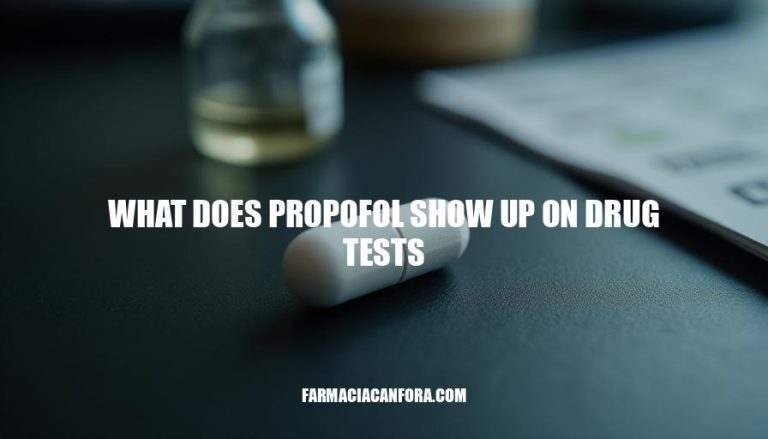


Propofol is a medication used to put people under anesthesia during surgery. It’s also used in hospitals to help patients relax. But what happens if someone takes it without a doctor’s permission?
Drug tests can detect propofol, and that’s why medical professionals and law enforcement agencies are interested in knowing how it works.
Propofol detection involves several methods, each with varying reliability and sensitivity:
Blood tests are highly reliable for detecting propofol, especially when administered shortly after exposure. Techniques like high-performance liquid chromatography (HPLC) and gas chromatography-mass spectrometry (GC-MS) are commonly used. These methods offer high sensitivity and can detect propofol and its metabolites within a short time frame.
However, the rapid metabolism and clearance of propofol from the bloodstream limit the detection window to a few hours post-administration.
Urine tests are another common method for detecting propofol, primarily through the detection of its metabolites, such as propofol glucuronide. These tests are less sensitive than blood tests but can detect propofol use over a longer period, up to several days after administration. Immunoassays are often used for initial screening, but confirmatory tests like liquid chromatography-tandem mass spectrometry (LC-MS/MS) are required for accurate results.
Hair follicle tests are less commonly used for propofol detection but can provide a longer detection window, potentially up to several months.
These tests involve analyzing hair samples for propofol and its metabolites. While hair follicle tests are less sensitive than blood and urine tests, they can be useful for detecting long-term or chronic use of propofol.
Each method has its strengths and limitations, and the choice of test depends on the specific context and timeframe of propofol use. Blood tests offer high sensitivity and reliability but have a short detection window, while urine tests provide a longer detection window but are less sensitive.
Hair follicle tests offer the longest detection window but are the least sensitive and less commonly used.
Accurate detection methods are crucial in ensuring patient safety, adherence to medical guidelines, and compliance with legal standards.
Drug tests can detect propofol using various methods, each with its own strengths and limitations. Blood tests are highly reliable and sensitive, detecting propofol within a few hours of administration.
Urine tests are less sensitive but can detect propofol use over several days.
Hair follicle tests offer the longest detection window, potentially up to several months.
The choice of test depends on the context and timeframe of propofol use. Blood tests provide high sensitivity and reliability but have a short detection window, while urine tests offer a longer detection window but are less sensitive. Hair follicle tests are the least sensitive but can detect long-term or chronic use.
It can be detected in blood, urine, and hair samples using various methods such as HPLC, GC-MS, immunoassays, LC-MS/MS, and liquid chromatography. Accurate detection is essential to prevent misuse, ensure patient safety, and maintain compliance with medical guidelines and legal standards.